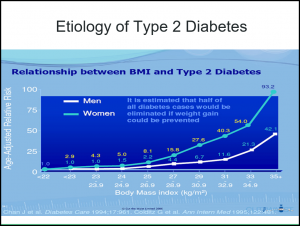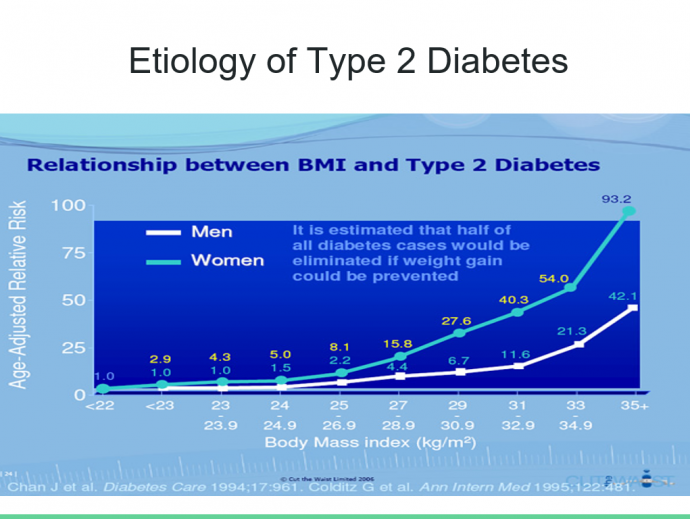UA COM-PHOENIX AMA TEAMS UP WITH LOCAL HIGH SCHOOL FOR OUTREACH
As part of the American Medical Association’s (AMA) 2014-2016 National Service Project “Improving Health Outcomes Together,” the AMA dedicated their focus on type 2 diabetes and cardiovascular disease. The AMA particularly emphasized the following as main factors that should be focused on in an effort to prevent type 2 diabetes: promoting healthy diet and physical activity as well as preventing tobacco use and excess alcohol consumption.
The University of Arizona College of Medicine – Phoenix chapter of the AMA piloted a community outreach project in spring 2016 at Red Mountain High School with the students of Mrs. Barbara Torrey. The goal of this project was to promote awareness and prevention of type 2 diabetes based on the AMA’s National Service Project. Students were asked to formulate Powerpoints regarding the etiology, pathology, prevention, and management of type 2 diabetes. Fifty-eight students of multiple grades participated, and the following four winners were chosen based on exceptional Powerpoints:
1st place: Brittani Rusnak
2nd place: Rachel Robinson
3rd place: Heather Hartman
4th place: Waldy Osorio Coronado
We asked Mrs. Barbara Torrey and her student, 1st place winner Brittani Rusnak, a few questions regarding this project.
How do you view diabetes education in the public school system?
Barbara Torrey: The growing number of diabetics in the US is staggering and an increasingly large portion of that population are under 18. Most students know of someone or know someone personally that is affected by diabetes. In school, students are educated in the basics of diabetes, but do not always grasp the extent of the disease. The preventive measures as well as diabetic complications are usually brushed over quickly and generalized. Overall, education should be proactive to help students learn how to prevent diseases like diabetes. We should be educating students what it means to “eat healthy” or to “exercise.” Students know the buzzwords, but they do not always know what it really means or how to apply it to their lives.
How did your students respond to this opportunity?
BT: Students were excited and honored to work with U of A medical school. Most of our biomedical science students at Red Mountain High School plan on some type of career in the medical field, many with a strong desire for medical school. The exposure to future fields of study at an earlier age is proven to provide students with a strong sense of commitment and ability to understand what is necessary to be successful at the next level. The experience within our classrooms is exceptional, but these types of partnerships and experiences is what truly prepares the students at Red Mountain HS.
How do you think your students benefited from this project?
BT: I believe students benefited from this project in many ways. It reinforced the information we learned in class, gave them the opportunity to learn new information, and allowed students to apply it to something tangible. This project also helped some students on a personal level. Some became more aware of their lifestyle choices that can increase the risk of developing diabetes. Others became concerned about close family and friends showing signs of pre-diabetes or diabetes. A few students even shared with me tough conversations they had with their loved ones educating them about the complications of diabetes. Many students felt empowered with such a strong knowledge base in the area of diabetes when talking about it with friends and family. I remember one comment from a student: “They listened to me, they actually listened!” As an educator, it was amazing to see the transformation. I truly believe, with the help of this project, students reached a new level of understanding and one that will stay with them a lifetime.
Do you think it was useful in reinforcing information what they learned in school while also potentially helping them learn new information?
BT: This project was absolutely beneficial for my students! In our biomedical science program, students learned about diabetes through a fictitious patient who they diagnosed with diabetes. The next step in the process was to make a connection between glucose and insulin to truly understand the feedback system utilized by the body. The students had to then build models to represent the cell membranes with receptors found in those with diabetes and those without to present to the class. Students collaboratively worked together to produce a brochure or newsletter to explain a day in the life of a diabetic. This project took this lesson to a whole new level. The U of A poster project prompted students to individually investigate and research the etiology, pathology, prevention, and management of diabetes. Through this project, we were able to take students to the next level of understanding and apply what they learned to help others become more educated about diabetes. This project truly reinforced information they obtained in class and created an opportunity for students to dig deeper for a greater good. And they were excited to do so!
Any other comments?
BT: Thank you for the opportunity U of A medical school was able to provide to my biomedical science students. I look forward to working with you in the future and impacting more lives!
What makes you interested in human biology and the healthcare field?
Brittani Rusnak: I am interested in the healthcare field because as a child I was diagnosed with an autoimmune disorder, transverse myelitis, and I began to research how the body reacted to the disease. From there on, I continued to look into other parts of the body and how they functioned. My brain became a sponge and took up as much information it could. From there on, I began to consider a profession in the healthcare field so I could help children like me.
What was your favorite aspect of this project?
BR: My favorite aspect of this project was learning about how nutrition can prevent or control diabetes. I found it fascinating how the changes in your diet can change your body.
What was one interesting thing you learned from the project?
BR: One interesting thing I learned from this project was the different tests used to diagnose diabetes and how a patient must take all of them in order to get the best results. That way the doctor can be sure that they don’t mis-diagnose them and can give them the best treatment plan possible. Whether that be through the use of insulin, oral medication, or through diet and exercise.
What do you plan on doing in the future?
BR: In the future, I plan on attending university and then medical school where I aspire to become a pediatric neurologist or oncologist.
The University of Arizona chapter of the American Medical Association would like to thank Barbara Torrey for introducing this project to her students. Congratulations to the four winners on their exceptional work!
Margaret Liu is a medical student in the Class of 2019 at the University of Arizona College of Medicine – Phoenix. She grew up in Arizona and graduated from Barrett, The Honors College at Arizona State University with a Bachelor of Science in Biological Sciences. She plans to pursue Internal Medicine.

